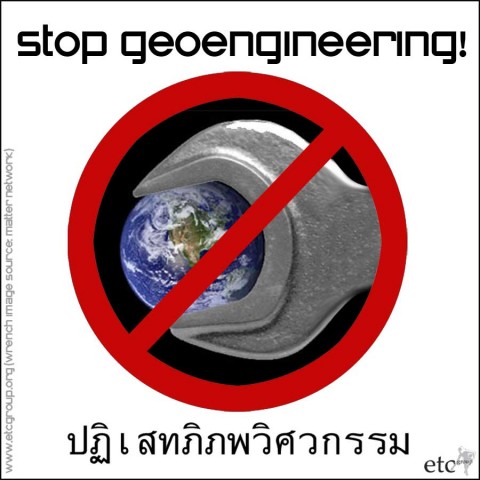Submitted by ETC Staff on

U.S. Energy Secretary Steven Chu’s speech last week advocating painting rooftops and roadways white to reflect sunlight may be yet another attempt to test the international waters on the controversial subject of geoengineering.[1] “We need an unequivocal statement from the White House that the U.S. Government is not green-lighting geoengineering in the run-up to Copenhagen,” said Pat Mooney, Executive Director of ETC Group, an Ottawa-based civil society organization monitoring new technologies. The United Nations Framework Convention on Climate Change (UNFCCC) meets in Denmark this December; UNFCCC subsidiary bodies are meeting this week and next in Bonn, Germany. “Benign as a new planetary paint job may appear, white rooftops may be the thin edge of the wedge – a technology that seems harmless but that opens the door to riskier geoengineering schemes,” suggests Mooney.[2] Geoengineering refers to the intentional, large-scale manipulation of the earth’s environment, primarily to counteract the effects of climate change.
Geoengineering is likely to be a hot topic behind the scenes – if not in open sessions – this week, as governments sit down to negotiate the post-Kyoto climate plan in Bonn. Rulemaking for planetary manipulation of the biosphere, using risky and untested technologies, is far more controversial than white paint suggests. Already, the draft negotiating texts for Copenhagen are replete with references to “enhancing technology” and “private sector cooperation.” Advocates for climate techno-fixes are eager for financial and policy backing to move forward with real-world testing, even when critical decisions about technology oversight have yet to be made.
“Participants in the climate change negotiations must be aware of the slippery slope that opening the door to geoengineering will put them on. Once governments opt for a techno-fix to the climate change quagmire, it will be very difficult to refocus attention and resources on the need to cut emissions in wealthy countries,” says Diana Bronson from ETC Group. “Politicians will be all too eager to say they have found a technological solution that allows us to keep driving our cars and consuming so-called ‘cheap’ food from heavily subsidized industrial agriculture. But these technologies have not been thoroughly examined, no governance mechanisms are in place to oversee them, and the public does not have access to the information it needs to distinguish science from ‘green’ whitewashing.”
| Attachment | Size |
|---|---|
| 119.66 KB |
